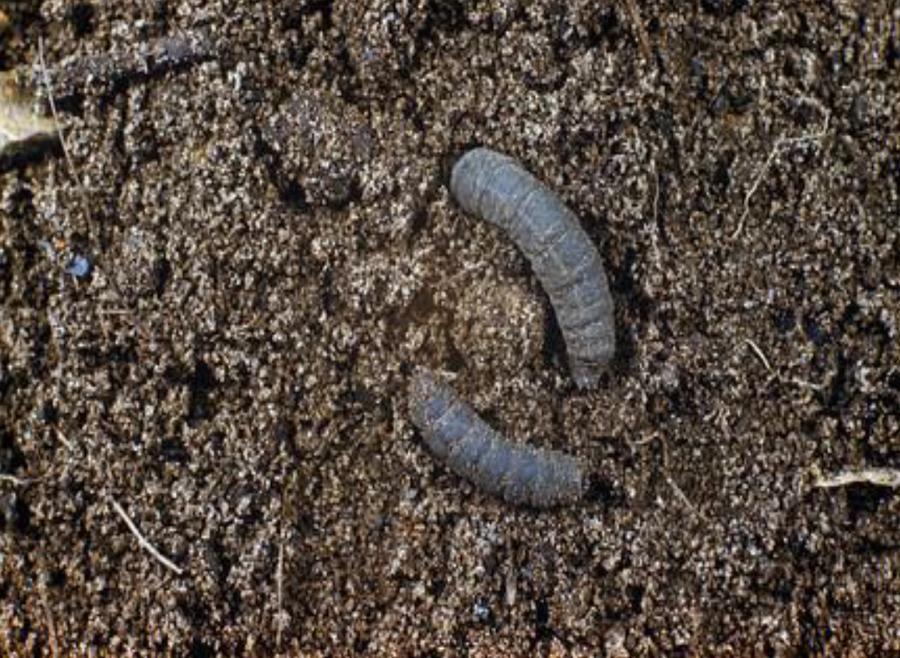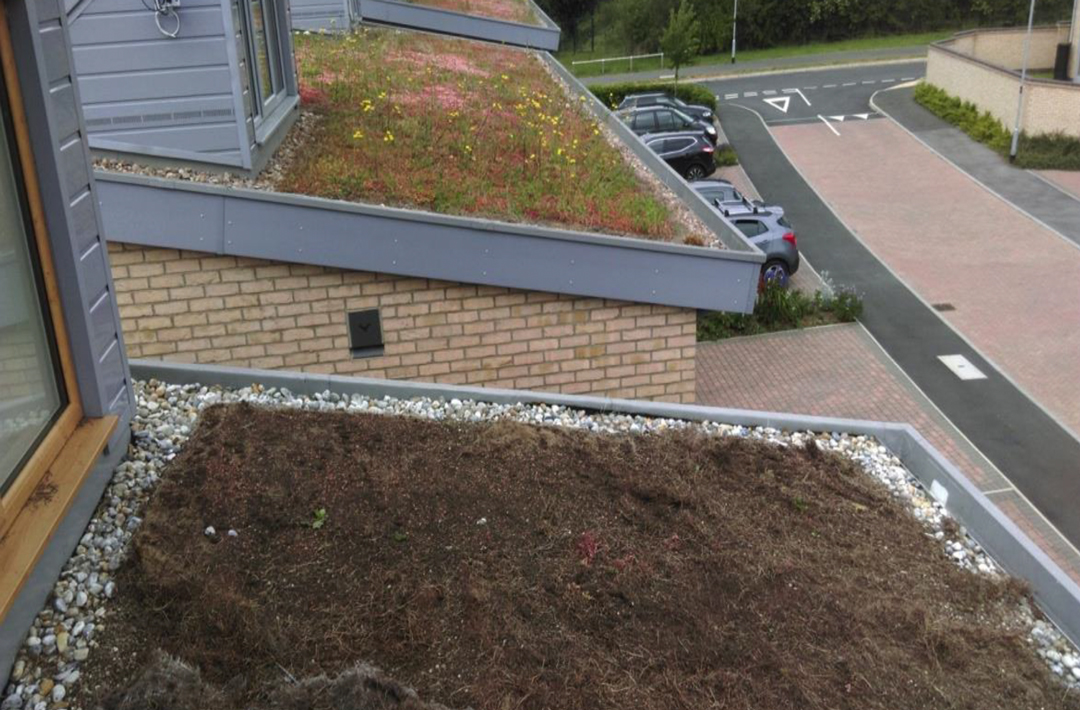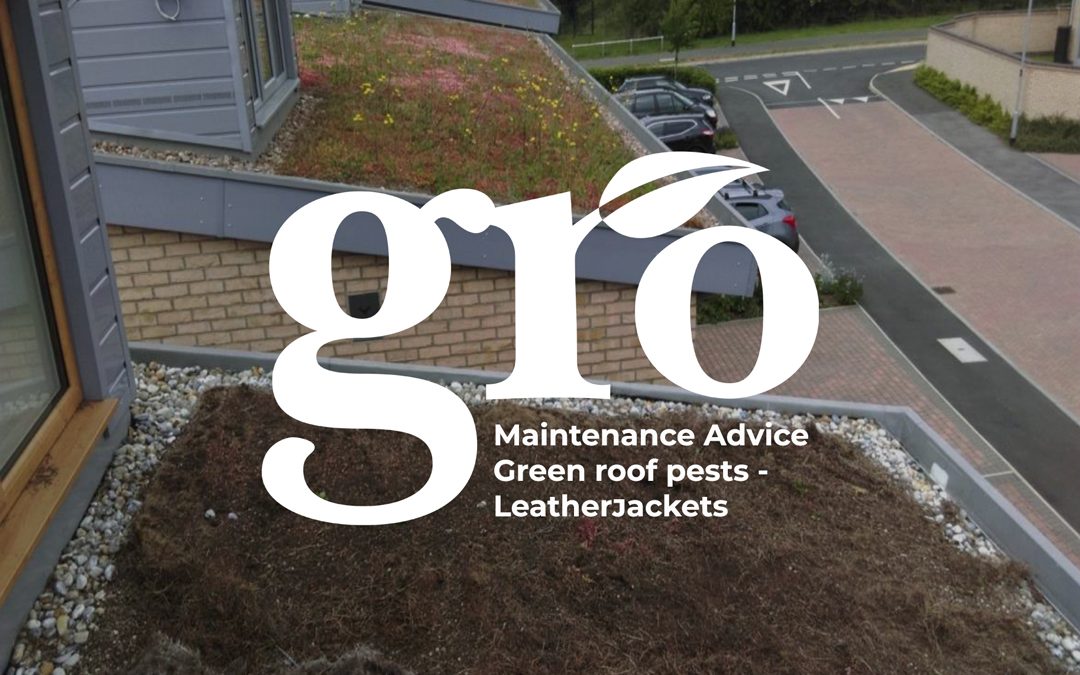What are leatherjackets?
Green roof pests leatherjackets are the larvae of craneflies, a broad classification spanning six true fly families (Tipulidae, Pediciidae, Limoniidae, Cylindrotomidae, Trichoceridae and Ptychopteridae). There are around 350 species in Britain; however, many are uncommon or rare. Generally, these insects are part of healthy, balanced ecosystems with most feeding on decomposing organic matter or algae, while others are predatory. A few species feed on living plant material and a small number of these may cause damage in gardens and on green roofs.
While typically a ground-level problem, Leatherjackets have the potential to impact extensive green roofs, planters, and lawns on intensive green roofs and podiums. Leatherjackets can damage lawns and vegetation blankets, small plants in garden borders and vegetable plots by eating roots, and attracting predators such as crows. They are often more pervasive after a wet autumn, as damp conditions favour survival of eggs and larvae.

Leatherjackets are greyish brown and up to 30mm long with no legs or obvious head.
Symptoms
How to tell if leatherjackets are a problem in your garden, planters or on your green roof:
- Leatherjackets have elongated tubular bodies, up to 30mm long, and are greyish brown. They have no legs or obvious head.
- Lawns and vegetation blankets develop patches where the grasses or sedum turns yellow-brown and often dies. This can be distinguished from similar effects caused by lawn diseases or adverse growing conditions by lifting the affected turf or blanket and finding leatherjackets in the surface layers of the soil/substrate.
- Crows, magpies, rooks and starlings will search for leatherjackets in turf and below vegetation blankets. These birds leave small round holes in the vegetation where they have inserted their beaks. They will also search for chafer grubs in a similar manner. On extensive roofs, sedum blankets have been known to be pulled apart by birds searching for the leatherjackets.
- In flower beds or vegetable plots, seedlings and small plants can be killed when the stems are damaged at soil level.
Management
Biological control is available for controlling leatherjackets on roofs and in lawns, flower beds and vegetable plots. These are pathogenic nematodes, Steinernema feltiae or S. carpocapsae, which are watered into the turf or soil. The nematodes enter the bodies of leatherjackets and infect them with a bacterial disease. They are not specific to leatherjackets and may also affect other insects in the soil and so should be used in a targeted manner. To be effective, the nematodes require soil that is well drained but moist and with a minimum temperature of 12°C (54°F). The turf around the edge of affected areas should be targeted to deal with larvae spreading out from “hot spots” in the lawn. However, by the time damage becomes apparent, the soil may be too cold for nematodes to be effective.
As a preventive measure, nematodes can be applied ideally in September to early October to protect against leatherjackets. Nematodes should be applied as soon as possible after purchase, following the suppliers’ instructions for use. The green roof should be watered before and after application to ensure initial survival of nematodes and movement into the growing media of a roof.
Where the vegetation has been killed off by the Leatherjackets, the bare areas can be overlaid with either new sedum blanket, sedum cuttings or sedum sprouts. Prior to any new work we would recommend removing the old layer of sedum blanket and / or netting where possible and spreading a fine layer of substrate to encourage the root matrix to develop. Keep the substrate damp until the new sedum establishes.
 An extensive green roof destroyed by leatherjackets eating the fine roots of the Sedum and birds pecking at the blanket to expose and eat the Leatherjackets.
An extensive green roof destroyed by leatherjackets eating the fine roots of the Sedum and birds pecking at the blanket to expose and eat the Leatherjackets.
For a quick reference guide, download our maintenance sheet here

